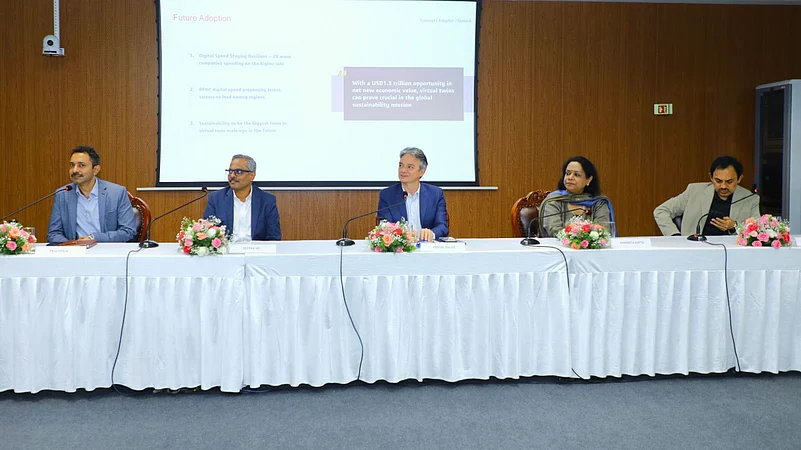Dassault Systèmes and Nasscom have released a report on the adoption and impact of virtual twin technology. The report reveals a two-fold increase in virtual twin implementations post-pandemic. Virtual twin adoption in India could play a crucial role in accelerating the design-to-realization process, helping organizations achieve their sustainability and circularity goals across the value chain.
Some of the key findings of the report include: Most Indian enterprises (57 per cent) spend less than 30 per cent of their technology budget on digital initiatives, and over half have only partially digitalized their key functions, leading to limited returns on investment. Advanced process automation is rare, with fewer than 20 per cent of companies implementing it, while most rely on basic retrofitted process automation (RPA). A quarter of companies lack formal budgets for virtual twins, and 80 per cent allocate less than 7 per cent of their tech spending to this area. Virtual twins are mostly used at the product (40 per cent) and process (23 per cent) levels, with the primary goal of achieving better product-market fit.
Advertisement
Further, a quarter of companies lack formal budgets for virtual twins, and 80 per cent allocate less than 7 per cent of their tech spending to this area. Virtual twins are mostly used at the product (40 per cent) and process (23 per cent) levels, with the primary goal of achieving better product-market fit. Supplier selection is a major challenge for 75 per cent of Indian enterprises, with half actively evaluating suppliers. Many firms (70 per cent) are still in the proof-of-concept or pilot stages for software, IT-OT hardware, and connectivity technologies.
Advertisement
“Virtual twin technology is poised at the brink of transformative potential, marked by a sharp increase in awareness and early adoptions since the pandemic. Although full-scale implementations and dedicated budgets remain limited, the focus on optimizing assets and processes opens up expansive opportunities. Overcoming hurdles in software procurement and enhancing top-level commitment and ecosystem synergies can unlock groundbreaking innovations, driving industries toward a more efficient and digitally integrated future,” said Sangeeta Gupta, Senior Vice President and Chief Strategy Officer at Nasscom.
This report is based on a survey of 130 companies in India as well as across Europe and APAC, focusing on large and mid-sized enterprises with annual recurring revenue (ARR) of $500 million and above. The survey spans four major industry segments: continuous manufacturing, discrete manufacturing, public infrastructure and smart cities, and life sciences and healthcare.















 Just one email a week
Just one email a week